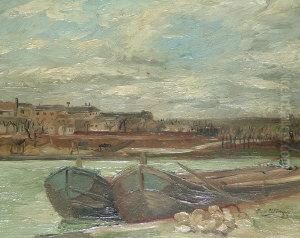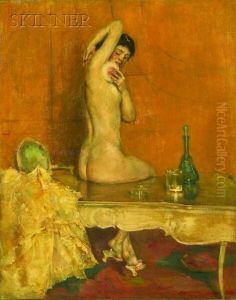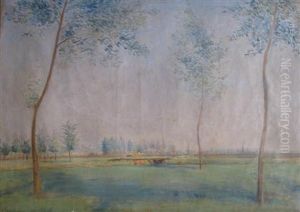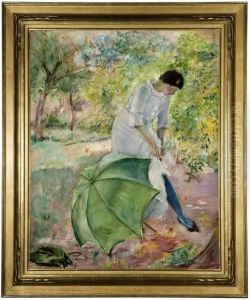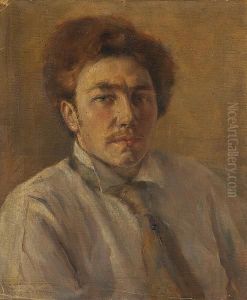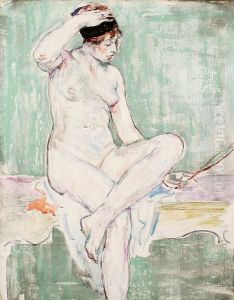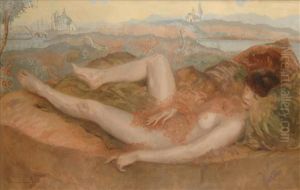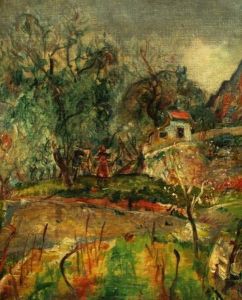Eugene Paul Ullmann Paintings
Eugène Paul Ullmann was an American artist, born on July 31, 1877, in Louisville, Kentucky. He was known for his contributions to portrait painting and his works often reflect the influence of the French artistic tradition, particularly that of the Impressionist and Post-Impressionist movements. Ullmann's family background was steeped in the arts; his father was a professional photographer, which provided Ullmann with an early exposure to visual composition and the play of light and shadow, elements that would later be reflected in his own artistic style.
Ullmann's artistic journey took a definitive turn when he moved to Paris in 1899 to study at the Académie Julian, a private art school popular among international students. There, he was taught by renowned artists such as Jean-Paul Laurens and Benjamin Constant. The Académie was known for its liberal teaching methods, which contrasted with the more rigid curriculum of the École des Beaux-Arts, allowing Ullmann to develop a personal style that combined the academic rigor of his teachers with the more fluid and expressive techniques of the Impressionists.
Throughout his career, Ullmann traveled extensively between Europe and the United States, absorbing influences and exhibiting his work. His paintings were recognized for their rich texture, sensitivity to color, and a certain emotive quality that resonated with viewers. Ullmann was also a part of the burgeoning American art scene and was associated with the National Academy of Design in New York. His works have been exhibited in prestigious venues, including the Pennsylvania Academy of the Fine Arts and the Corcoran Gallery in Washington, D.C.
In addition to his achievements in painting, Ullmann actively contributed to the art community as a teacher. He shared his knowledge and skills with a younger generation of artists, helping to shape the future of American art. Eugène Paul Ullmann's legacy is that of a bridge between the classical European traditions and the evolving styles of American art in the early 20th century. His dedication to his craft and his impact as an educator left an indelible mark on the art world.
Ullmann passed away on October 6, 1953, in New York, leaving behind a body of work that continues to be appreciated for its artistic merit and historical significance. His paintings remain a testament to his skill in capturing the essence of his subjects and his ability to blend the old with the new, the European with the American, into a cohesive and compelling visual narrative.
